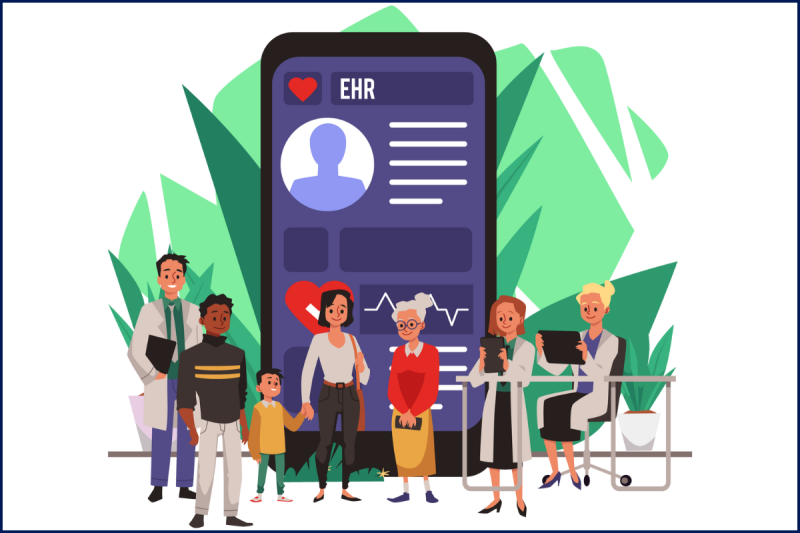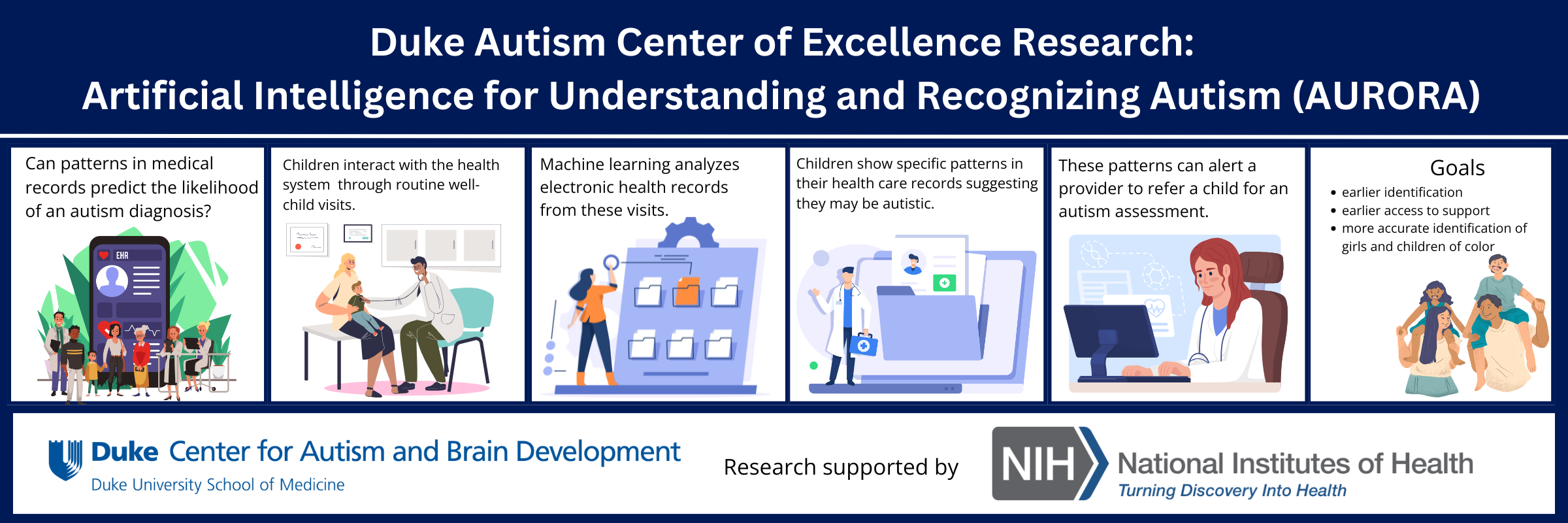
When a child’s early social development doesn’t quite match the typical timeline of milestones and behaviors, parents and other caregivers may wonder about next steps to help their child, as well as what these differences may mean for their child over the long term. Pediatricians also face the question of which children with delayed language or other missed social milestones will need specialized assessments and therapies.
The American Academy of Pediatrics recommends universal autism screening at 18 months. Universal screenings are an important tool; early screening prompts a referral for a diagnostic evaluation, and early intervention has been shown to improve outcomes. But this method of screening requires a proactive assessment by a provider and may be prone to errors if the clinician is not well trained in its usage. These questionnaires rely on subjective input from clinicians and caregivers, which may skew results.
A better understanding of developmental pathways associated with autism would help the clinician identify and connect the child with timely assessments and support targeted to their needs. A new Duke study is exploring how electronic health records (EHR) could facilitate this understanding.
Using AI to Understand and Recognize Autism
Duke data scientists, autism researchers, and healthcare professionals are collaborating to help pediatric providers optimize care for children with neurodevelopmental differences. By leveraging routinely collected health data, they aim to address a critical need for efficient, consistent, and objective methods for early autism screening.
“We know from previous work that certain early childhood medical conditions can be indicative of a future autism diagnosis.”
- Benjamin Goldstein, PhD
Embedded in EHR data are the stories of thousands of children and families interacting with the health system. These stories describe how children grow and develop over time, what conditions they have, and which services they’ve accessed. With support from an Autism Center of Excellence (ACE) grant from the National Institutes of Health, the researchers believe these “stories” could help reveal developmental pathways for autistic children.
This project, Artificial Intelligence for Understanding and Recognizing Autism (AURORA), uses machine learning to recognize patterns in EHR data associated with children who are later diagnosed with autism.
|
AURORA Study Investigators |
|---|
|
Benjamin Goldstein, PhD, division chief of Translational Biomedical Informatics, director of data science at Duke AI Health Gary Maslow, MD, MPH, child psychiatrist, pediatrician and medical director of the Duke Center for Autism and Brain Development Lauren Franz, MBChB, MPH, interim director of the Duke Center for Autism and Brain Development Matthew Engelhard MD, PhD, assistant professor of biostatistics and bioinformatics Geraldine Dawson, PhD, founding director of the Duke Center for Autism and Brain Development
|

“We know from previous work in the ACE that certain early childhood medical conditions can be indicative of a future autism diagnosis,” said Benjamin Goldstein, PhD, director of data science at Duke AI Health and lead investigator on the study. However, the complete picture of a child’s early medical experience is complex and challenging to represent. Medical records contain far too much information for a physician to assess during a visit, or for a research team to read and analyze.
That’s why the team is using a type of artificial intelligence (AI) that enables machines to understand human language and recognize and interpret clinical notes. “Machine learning models allow us to reflect these complex factors in a more efficient way,” said Goldstein.
AURORA uses machine learning to recognize patterns in EHR data associated with children who are later diagnosed with autism.
Reading Between the Lines of Doctors’ Notes
AI screening of a medical chart can allow for a more efficient and objective assessment than subjective observations reported by clinicians and caregivers on an autism screening questionnaire. Conventional analysis of medical records relies on standardized medical codes to identify individuals with a diagnosis. But what about children without a diagnosis in the medical record?
Characteristics of autism and related developmental conditions such as late talking may be under-coded, with clinicians entering no formal diagnostic code when caregivers report or clinicians identify a concern. These characteristics may only be mentioned in the clinicians’ free-text notes from doctor visits.
EHR data allow the team to consider a larger, more representative group of children over a longer period than a typical research study, ensuring that the results of this study apply to more children growing up today.
“Machine learning models allow us to reflect these complex factors in a more efficient way.”
- Benjamin Goldstein, PhD

Helping Providers and Families Make Care Decisions
The goal of using machine learning models is to identify patterns that sort the unique stories found in clinicians’ notes into different profiles with specific developmental trajectories.
For example, co-occurring conditions such as feeding difficulties and language delay—potential characteristics of autism—can appear in a person’s medical history years before an autism diagnosis. This model can look at those patterns to predict which children are likely to receive an autism diagnosis and help inform what support may be right for them.
Ultimately, the team envisions a tool embedded into the EHR that would alert the provider when a child’s record starts to look like one of these profiles. It would also support shared decision-making between families and providers on additional screening and diagnostic and service referral.
About Duke’s ACE Studies
AURORA is one of three research programs at the Duke Center for Autism and Brain Development supported by the NIH ACE grant. All three projects focus on autism detection in early childhood. The SenseToKnow project is developing an app that uses computer vision to measure behavioral signs of autism. The app monitors eye movements, facial expressions, and other behaviors while the child watches videos on a tablet. A third ACE study, Computer-vision for Multi-Modal EEG Technology (COMET), measures brain activity in search of objective patterns unique to autism.
These interdisciplinary projects use the team’s psychiatric expertise along with computer engineering and artificial intelligence to develop more effective autism screening tools, outcome measures, and brain-based biomarkers. The shared goal is to develop more accurate and objective ways of detecting autism early. Early detection allows providers to refer families to supports and services as early as possible, reducing disparities in access to early diagnosis and therapies. Early access to specialist support in childhood gives autistic children the opportunity for better outcomes throughout their lifetime.